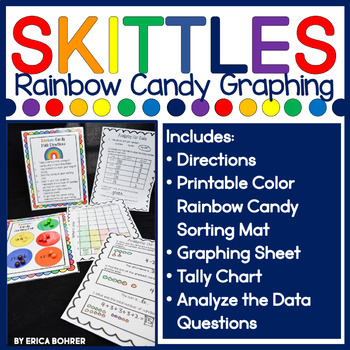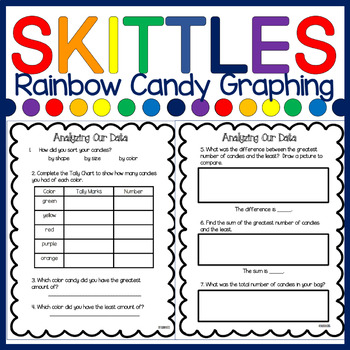Skittles Sorting, Graphing, and Analyzing Data | Rainbow Color Graphing
- PDF
What educators are saying
Description
This rainbow candy sorting, graphing, tallying, and analyzing data activity is a fun way to reinforce math concepts. The resource is meant to use with fun-sized Skittles rainbow candies. It is common core aligned for first and second grade.
This graphing math activity would be so fun to do around St Patrick's Day or during a rainbow or graphing unit!
This Skittles Sorting, Graphing, and Tallying Math Resource Includes:
- Teacher Directions
- Student Directions
- Printable color sorting mats
- Bar graph
- Tally Chart
- Student questions based upon the bar graph data
⭐⭐⭐⭐⭐"This is going to be a perfect attention-grabber at the beginning of out graphing unit. Thank you!" -April J.
⭐⭐⭐⭐⭐"My students were so engaged in learning with this resource. A simple way to make graphing fun!" -Hannah L.
Let's Stay Connected:
Please, follow my store to get updates of new and free items. You can also find more teaching ideas on my blog and through Facebook, Pinterest, & Instagram.
Check out this BLOG POST for St. Patrick's Day Freebies and more!
Happy Teaching!
-Erica Bohrer





